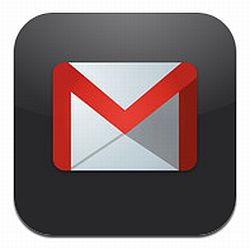Google’s Gmail service is now making it simpler to send money to others by sending “cash” in an email message.
The new capability is possible because Google has integrated its Google Wallet payment services with Gmail, allowing users to securely send up to $10,000 (£6,500) per transaction to another person, according to a 15 May post by Travis Green, product manager for Google Wallet, on the Google Commerce Blog.
Google Wallet integration
“Paying back your friends is now as simple as sending an email, whether you’re chipping in for lunch or reimbursing your roommate for your share of the rent,” wrote Green. “Google Wallet is now integrated with Gmail, so you can quickly and securely send money to friends and family directly within Gmail – even if they don’t have a Gmail address. It’s free to send money if your bank account is linked to Google Wallet or using your Google Wallet balance, and low fees apply to send money using your linked credit or debit card.”
 Users are not charged any fees if they send money using their bank accounts of Google Wallet accounts. Funds sent using a credit or debit card are subject to a 2.9 percent transaction fee, with a minimum fee of 30 cents.
Users are not charged any fees if they send money using their bank accounts of Google Wallet accounts. Funds sent using a credit or debit card are subject to a 2.9 percent transaction fee, with a minimum fee of 30 cents.
There are no fees to recipients when they get their funds.
So far, the money sending service is only available in Gmail on desktop machines, although “you can send money from Google Wallet at wallet.google.com from your phone or laptop”, wrote Green.
Smartphone and laptop users will have to set up Google Wallet to send and receive money, he added.
Gradual introduction
The new service will not be available to all users at once, he wrote. “We’re rolling out this feature over the coming months to all US Gmail users over 18 years old, so keep an eye out for the $ icon in the attachment options. You can also get earlier access if your friends have the feature and send money to you.”
Google’s Gmail turned 9 years old in April, having started on April 1, 2004. At its launch, Gmail offered users 1GB of mail storage, which was about 20 times the storage of other services at that time, as well as the ability to see messages in a “thread”.
In 2005, Gmail users were bumped up to 2GB of mail storage, and in April 2006, the calendar feature was launched as part of Gmail.
Chat was added in February 2006, and by May 2006 Gmail was available for use in 40 languages, including Hebrew and Arabic.
In October 2007, IMAP capabilities were added to allow users to get and send their Gmail from anywhere using any IMAP-enabled device. By April 2012, Gmail users received 10GB of free mail storage, while by November 2012 Gmail was available for users in 57 languages.
In March 2013, users got a major redesign for how they could compose their emails, including long-awaited capabilities to be able to compose multiple messages at the same time.
Competition
Gmail’s innovations have even inspired competitors to improve their own offerings, which Microsoft did in February with the official rollout of its updated Outlook.com email service that is replacing Hotmail.com.
With the new and refreshed Outlook.com service and its updated and friendlier user features, Microsoft hopes to continue to lure users over from Gmail and other services. For Microsoft, taking on Gmail could still be an uphill climb.
Gmail claims to have more than 425 million active user accounts worldwide and has already been offering many of the same kinds of features that Outlook.com is just incorporating, such as the ability to send very large attachments up to 10GB in size.
Are you a Google expert? Take our quiz!
Originally published on eWeek.





